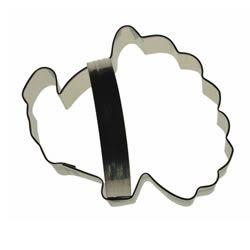For some reason, people think the above video of a kid being shocked by a remote dog training collar is funny.
I don’t think it is funny at all and I wonder what people find amusing about inflicting pain intentionally.
In my whole animal training career, I’ve never used shock to train an animal.
Now we’ve used it as a “hot wire” barrier for safety when training lions (males tend to want to eat your bucket of chicken necks and can get possessive and aggressive when they want your stash).
Some trainers that specialize in training rattlesnake avoidance use it.
So, if the shock collar training would save the life of an animal would you use it?
Hard question to answer.
But personally, I’ve never been interested in using shock for behavior problems or dog training because I believe that you can get by without it.
So, when I tested the Aboistop (now known as citronella collar) back in the early 1990s, I thought it was a great alternative collar for some of the pet behavior problems that people used electronic collars to solve.
Back then it was the mission of many sales reps from the electronic collar industry to try to convince me that I was mistaken about shock collars.
One swore it was not as horrible as I thought.
So, being the dedicated (and sometimes stupid) animal trainer, I decided to test a collar myself.
I held the collar in my hand, he set the shock level at the lowest level, and then he shocked me.
No warning tone–just a pure jolt of electrical current that hurt and that left my hand numb for a unacceptable duration of time. (Something like a half an hour if I remember right.)
It had the opposite effect that he intended because he really convinced me that I did not want to use shock to train animals, even though I already knew that prior to this “test,” it helps to have no doubt in your mind.
Now I mentioned in a previous post that I’ve had discussions with more traditional trainers that do use shock.
The use of the electronic collar has been pretty standard in hunting dog circles (correct me if this has changed drastically) and for problems such as barking.
I remember going on the rounds of this traditional trainer and checking the electronic collar on a doberman that was a problem barker–the owner did not rotate it over the previous week and the dog actually had two burns where the prongs hit the neck.
So I just have to ask, when does this type of thing cross over into animal abuse?
And, is it the owner’s lack of compliance the reason for using the collar that ultimately contributed to the injury?
Shock is used in a lot of animal industries, and back in the day (1970s) , we had “hot shots” (cattle prods) on hand for emergencies at one wild animal training facility I worked at.
In most cases, the cattle prods are used to dissuade animals in certain situations and moving large animals away from open gates or downed fences without having to touch them.
Cops reportedly used cattle prods on humans during the civil rights movement.
There is also a disturbing (and foul mouthed) redneck video of a guy using a cattle prod on another guy which drops him to the ground, the guy zaps him again–and they think it is funny. He is down for a while and actually pukes.
That type of shock packs a powerful punch and isn’t a game.
So, now I have to ask you: What your opinion is on the use of shock in animal training?
- Have you used it?
- If so, How do you justify the use of electronic training collars?
- What experiences can you share about the use of shock collars?
- How do you deal with owner non-compliance?
- Do you think it is okay for use with any living thing?
- Do you think there are other alternatives?
- If you have no experience with the use of shock in training an animal, on what what do you base your opinion? (Pro or Con)
Please share your answers below.
 I am traveling again but will have some entertaining posts to share with you soon.
I am traveling again but will have some entertaining posts to share with you soon.
